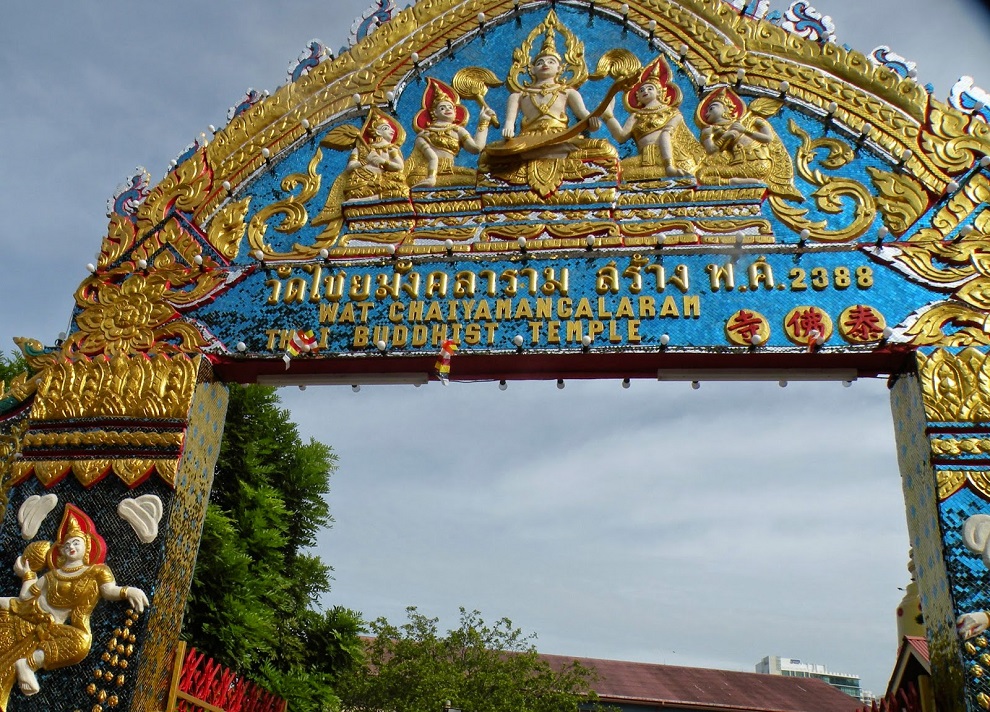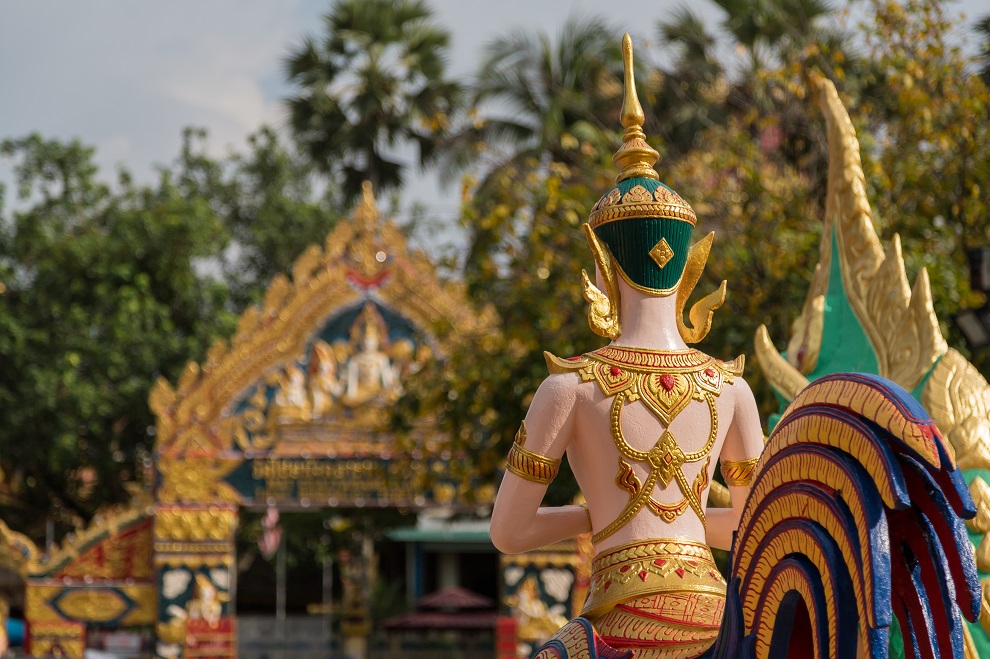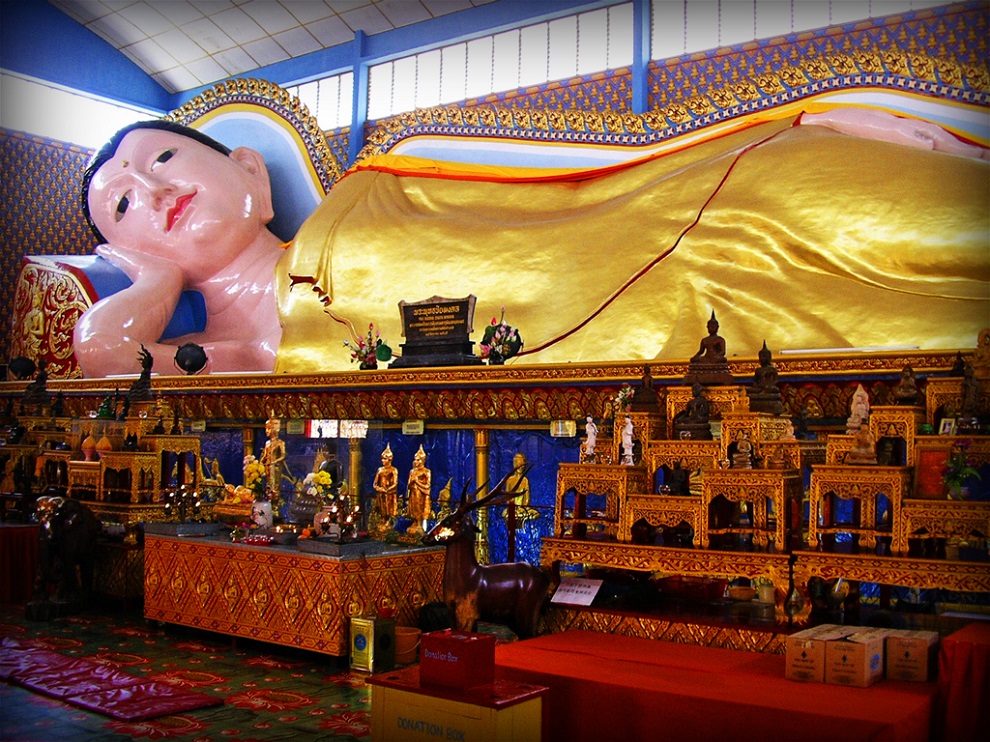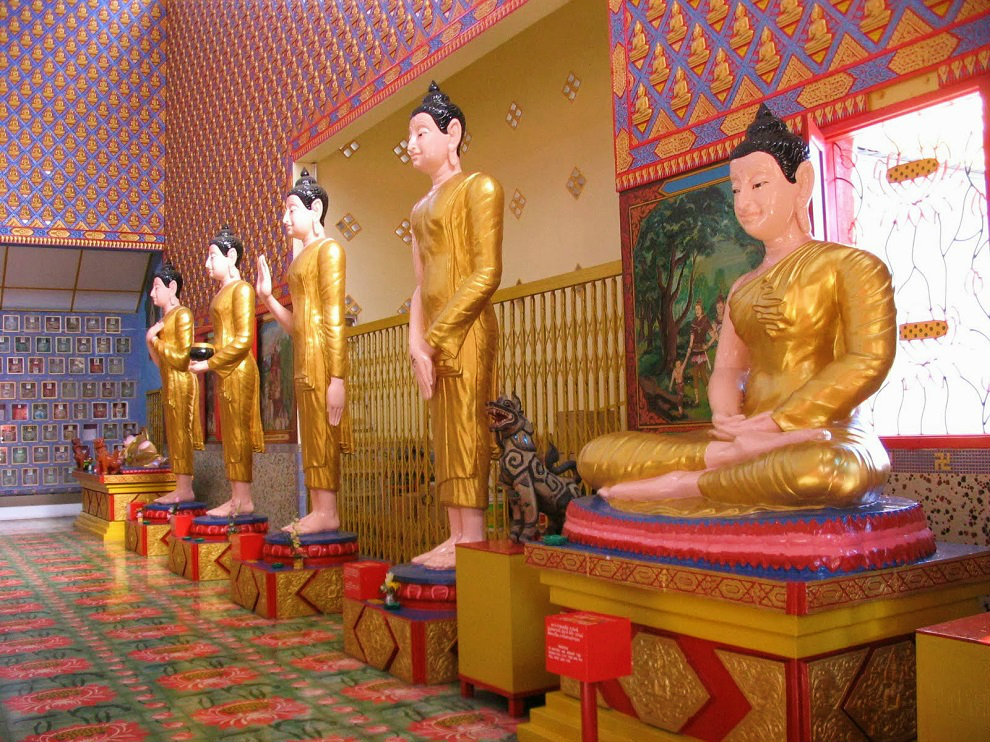Wat Chaiya Mangkalaram Temple In Penang
Wat Chaiya Mangkalaram Temple is the largest Thai temple in Penang. Set just off Jalan Burma (on the way to Batu Ferringhi), the yellow-and-blue temple is also known as Wat Buppharam. Built in 1845, it is home to a 108ft-long reclining Buddha image, said to be the third largest in the world.
Draped in a gold-leafed saffron robe, the sprawling statue was erected as a monument to signify Buddha’s final resting position at his death and symbolizes his detachment from worldly matters. Located opposite the less extravagant Dharmmikarama Temple (which lights up beautifully at night) Wat Chaiya Mangakalaram Temple is a beautiful sight with ornate, gold pagodas, and mural-painted walls.
Spread across five acres of land (which was gifted by Queen Victoria to the Thai community as a gesture of goodwill to bolster trading relations with Thailand) Wat Chaiya Mangkalaram Temple was originally led by a Thai Theravada Buddhist monk, Phortan Kuat.
Also known as the ‘Powerful Monk’, he was very much adored by his congregation: to this day, his devotees bring bowls of asam laksa (coconut-based sour gravy noodles) to his shrine to honour him.

Wat Chaiya Mangkalaram Temple is designed in typical Thai-style with sharp-eaved roofs and flamboyant ceilings. The temple entrance is set off by a statue of a naga (a Southeast Asian water dragon), while the exit is marked by a Chinese dragon (the East Asian equivalent).
These serpents lay coiled around the feet of two grim green-faced statues carrying hefty swords that flank the entryway: supposedly the statues were designed to ward off unwanted visitors.

The reclining Buddha statue at Wat Chaiya Mangkalaram Temple is surrounded by elaborate images of a gold-leaf covered Buddha in different poses. Each pose is supposed to signify different things: Buddhists believe that the reclining Buddha, for example, (with his head resting in the palm of the right hand and his head pointing northwards) signifies enlightenment or Nirvana.
Around the outstretched giant Buddha sculpture are a series of hand-painted gold 3D images detailing Gautama Buddha’s story. Interesting fact: underneath the lounging Buddha are slots where urns containing the ashes of deceased devotees are stored.

In addition to the 108ft-long reclining Buddha, Wat Chaiya Mangkalaram Temple also has smaller statues of the ‘Awakened One’ in various guises plus you can also see statuettes of other popular Thai deities in the main prayer hall. Besides that there is a series of colourful statues of Devas and other mythical creatures on display, spread out across the temple grounds. Vibrant murals depicting Buddha’s life story are painted on the temple walls.
Wat Chaiya Mangkalaram Temple is open between sunrise and sunset and entrance is free.
During traditional Buddhist festivals like Songkran and Loy Krathong, local Thais crowd the temple for the celebration since the temple acts as the focal point for the event.



































